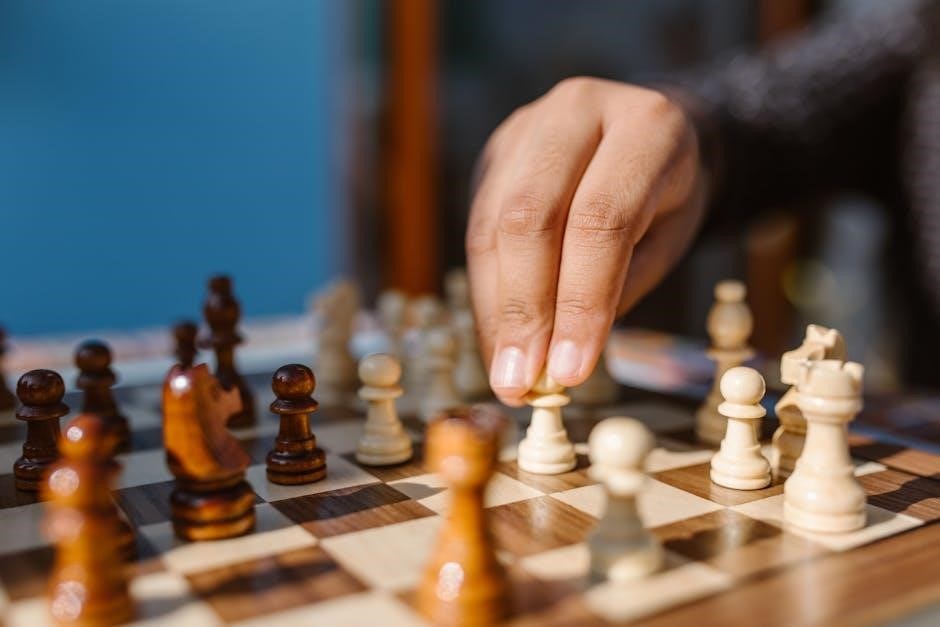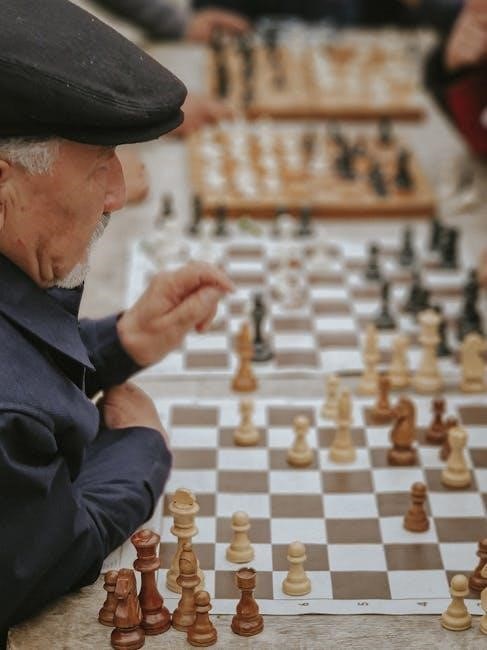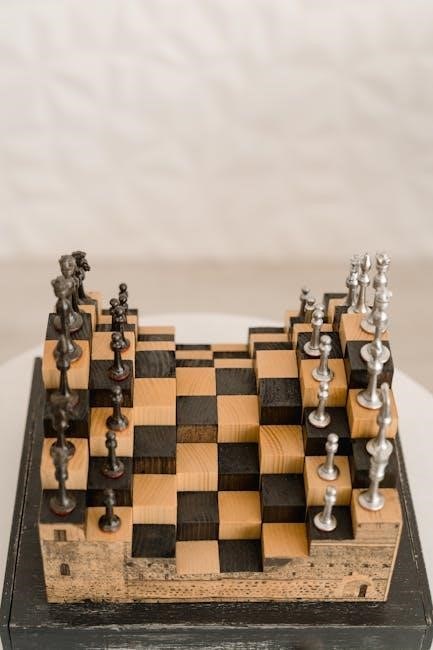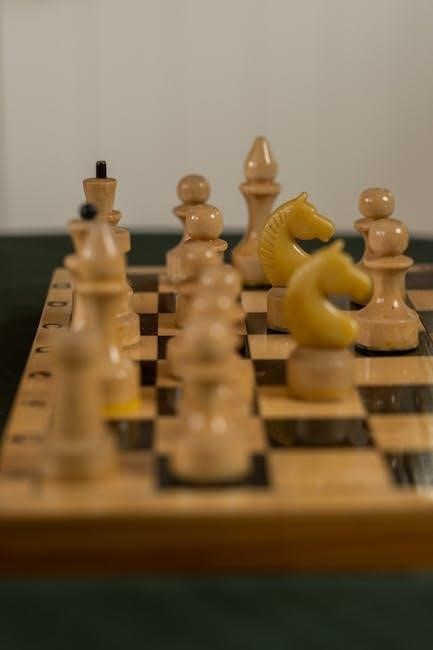Discover engaging Martin Luther King Jr. activities, including lesson plans, worksheets, and diversity exercises, designed to inspire students about equality, kindness, and his transformative vision for society.
1.1 Overview of Martin Luther King Jr.’s Significance
Martin Luther King Jr. was a pivotal figure in the Civil Rights Movement, advocating for racial equality and social justice through non-violent protests. His vision of a “Beloved Community” inspired nationwide change, emphasizing unity, fairness, and compassion. King’s leadership in events like the March on Washington and his iconic “I Have a Dream” speech solidified his legacy as a champion of human rights. His teachings continue to influence modern discussions on diversity, kindness, and equality, making his life and work a cornerstone of educational programs. The establishment of Martin Luther King Jr. Day as a national holiday underscores his enduring impact on American society and the importance of his values in shaping a just future.
1.2 Importance of Teaching MLK Jr.’s Legacy
Teaching Martin Luther King Jr.’s legacy is essential for fostering empathy, kindness, and social awareness in students. His principles of equality and non-violence provide a foundation for understanding historical and contemporary social justice issues. By integrating his story into education, students learn the value of standing up for justice and the power of collective action. King’s message inspires young minds to embrace diversity and strive for a more inclusive world. Educational resources, such as worksheets and activities, make his teachings accessible and engaging, helping students connect his vision to their own lives and communities. This not only enriches their understanding of history but also empowers them to contribute positively to society.

Historical Context of Martin Luther King Jr.’s Life
Martin Luther King Jr. was born in 1929 in Atlanta, Georgia, during a time of racial segregation. His leadership in the Civil Rights Movement shaped America’s fight for equality and justice.
2.1 Key Events in MLK Jr.’s Life and the Civil Rights Movement
Martin Luther King Jr. was born on January 15, 1929, in Atlanta, Georgia, during an era of racial segregation. His leadership in the Civil Rights Movement began in the 1950s, with pivotal events like the Montgomery Bus Boycott in 1955, sparked by Rosa Parks’ refusal to give up her seat. In 1963, he delivered his iconic “I Have a Dream” speech during the March on Washington, advocating for racial equality. King’s nonviolent protests and speeches played a crucial role in passing the Civil Rights Act of 1964 and the Voting Rights Act of 1965. Tragically, he was assassinated in Memphis in 1968 while supporting a strike. His legacy endures as a symbol of justice and equality, shaping America’s progress toward civil rights.
2.2 The Impact of MLK Jr.’s Leadership on American Society
Martin Luther King Jr.’s leadership profoundly transformed American society by advancing civil rights and social justice. His advocacy for nonviolent protest inspired nationwide movements, leading to landmark legislation such as the Civil Rights Act of 1964 and the Voting Rights Act of 1965. These achievements dismantled legal segregation and expanded voting rights, fostering a more inclusive democracy. King’s vision of a “Beloved Community” continues to influence modern movements for equality, promoting dialogue on issues like racial justice and human rights. His legacy encourages empathy, kindness, and collective action, embedding his principles into the fabric of American culture and education, ensuring his impact remains a guiding force for future generations.
Educational Resources for Teaching MLK Jr.’s Legacy
Explore comprehensive educational resources, including lesson plans, printable worksheets, and creative activities, to teach MLK Jr.’s legacy, fostering understanding of equality, justice, and his enduring impact on society.

3.1 Lesson Plans for MLK Jr. Day Celebrations
Engage students with thoughtfully designed lesson plans for Martin Luther King Jr. Day, featuring activities that explore his vision of a “world house” and promote kindness. These plans, suitable for grades 3-4, span approximately two weeks, combining discussions, poetry, and reflective exercises. Students learn about prejudice and discrimination through hands-on experiences, fostering empathy and understanding. The curriculum includes timelines, biographical studies, and creative writing, helping students connect with MLK Jr.’s legacy. Activities like crafting speeches and participating in diversity exercises encourage critical thinking and community-building. These lesson plans are ideal for educators seeking to inspire young minds with MLK Jr.’s teachings on equality and justice, ensuring his impact resonates in the next generation.
3.2 Printable Worksheets and Activities for Students
Enhance learning with printable worksheets and activities tailored for students, available in PDF format. These resources include reading comprehension passages, grammar exercises, and creative writing prompts centered on Martin Luther King Jr.’s life and legacy. Ideal for grades K-5, the activities are designed to engage students in meaningful ways, fostering understanding of equality and justice. Timelines, word searches, and speech-writing exercises encourage critical thinking and creativity. Many worksheets are available in both English and Spanish, catering to diverse classroom needs. These printable resources offer a hands-on approach to teaching MLK Jr.’s vision, making complex concepts accessible and fun for students of all ages and skill levels.
Martin Luther King Jr. Day Activities

Celebrate MLK Jr; Day with engaging activities like timelines, creative writing, and diversity exercises, fostering kindness and reflection on his vision for a united and equitable society.
4.1 Diversity and Kindness Exercises for Students


Engage students with diversity and kindness exercises inspired by MLK Jr.’s vision of a united society. Activities like the “Diversity Egg Activity” visually demonstrate that everyone is the same inside, regardless of appearance. Students participate in fairness sorting games, categorizing scenarios as fair or unfair, fostering empathy and understanding. These exercises encourage students to reflect on their actions and how they can contribute to a more inclusive community. Simple yet impactful, these activities help young learners grasp big concepts like equality and respect. By focusing on kindness and unity, students connect with MLK Jr.’s values, inspiring them to become agents of positive change. These exercises are designed to be engaging and thought-provoking, helping students build a stronger sense of social responsibility.
4.2 Reflective Writing and Discussion Prompts
Foster deeper understanding with reflective writing and discussion prompts that explore MLK Jr.’s vision of equality and justice. Students analyze key speeches, such as the “I Have a Dream” address, and reflect on their own roles in creating a fair society. Writing prompts encourage students to share personal experiences with kindness and inclusivity, while guided discussions help them connect historical events to modern-day issues. These exercises promote empathy, critical thinking, and a commitment to positive change. By engaging with MLK Jr.’s teachings, students develop a stronger sense of social responsibility and a deeper appreciation for the power of their actions in shaping a better world.
Interactive Projects and Worksheets
Engage students with interactive projects, timelines, and creative writing exercises that explore MLK Jr.’s life and legacy, fostering a deeper connection to his vision of equality and justice.
5.1 Timelines and Biographical Activities
Timelines and biographical activities offer students a visual and engaging way to explore Martin Luther King Jr.’s life and legacy. These exercises help students connect key events in MLK Jr.’s journey, such as his birth, leadership in the Civil Rights Movement, and iconic speeches, to broader historical contexts. Interactive timelines allow learners to sequence important milestones, fostering a chronological understanding of his impact. Additionally, biographical activities, such as reading comprehension passages and reflection exercises, encourage students to delve into MLK Jr.’s vision of equality and justice. These resources are often paired with discussion prompts, enabling students to draw connections between historical events and contemporary issues. By incorporating timelines and biographical studies, educators create a comprehensive and immersive learning experience that honors MLK Jr.’s enduring influence. These activities are adaptable for various grade levels, ensuring accessibility and depth for all learners.
5.2 Creative Writing and Speech Projects
Creative writing and speech projects empower students to engage deeply with Martin Luther King Jr.’s legacy. Activities include crafting “I Have a Dream”-style speeches, analyzing MLK Jr.’s quotes, and reflecting on his vision of equality. Students can use guided templates to write their own inspirational speeches, fostering creativity and critical thinking. These projects encourage learners to explore themes like justice, kindness, and courage, aligning with MLK Jr.’s message. By expressing their ideas, students develop public speaking and writing skills while connecting with historical significance. Such exercises inspire empathy and motivate students to contribute positively to society, embodying MLK Jr.’s ideals of transformative change through words and actions. These projects are adaptable for various grade levels, ensuring meaningful engagement for all learners.
Martin Luther King Jr.’s legacy continues to inspire future generations through creative activities, fostering kindness, equality, and courage. His vision remains a cornerstone of social change and education.
6.1 The Lasting Impact of MLK Jr.’s Teachings
Martin Luther King Jr.’s teachings continue to profoundly influence modern society, inspiring movements for equality and justice. His vision of a Beloved Community remains a guiding principle, fostering unity and compassion. Educators use his legacy to create engaging activities, such as diversity exercises and reflective writing, helping students connect with his message. These resources emphasize kindness, courage, and the power of collective action, ensuring his ideals endure. By integrating MLK Jr.’s values into curriculum, educators empower students to become agents of change, promoting a future rooted in fairness and respect. His impact is evident in the widespread adoption of his teachings, transforming classrooms into spaces for meaningful dialogue and growth.

6.2 Encouraging Students to Emulate MLK Jr.’s Values
Encouraging students to embrace Martin Luther King Jr.’s values fosters a sense of responsibility and compassion. Interactive activities, such as diversity exercises and reflective writing, help students connect with his principles of kindness, equality, and justice. Educators can use engaging resources like timelines, reading comprehension worksheets, and creative writing prompts to deepen understanding. These tools enable students to internalize MLK Jr.’s vision, inspiring them to become advocates for positive change; By integrating these values into daily learning, educators empower students to strive for fairness and respect in their own lives and communities. This approach ensures MLK Jr.’s legacy continues to inspire future generations to stand up for what is right.